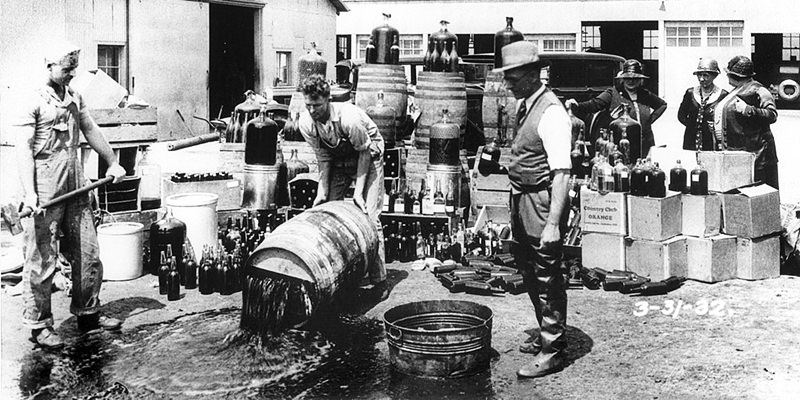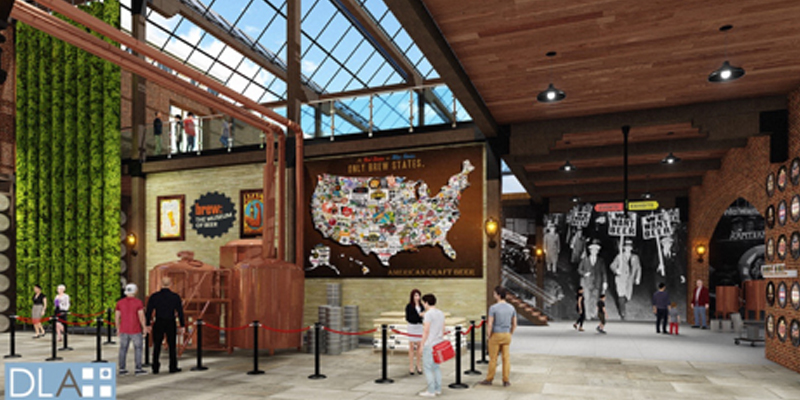Imagine 50,000 square feet of museum space dedicated solely to beer in the heart of Pittsburgh, one of the nation’s burgeoning food cities. Each visitor takes a short quiz on a tablet, and their answers guide them through a personalized, interactive series of exhibits that tell the 10,000-year-old tale of beer. At the end, a restaurant and brewery present each person with a curated taste of everything she just learned. That’s the dream of Brew: The Museum of Beer.
The core team trying to make Brew a reality is Joe McAllister, Denis Meinert, Andy Quinn and Matt Sherwin, a collection of entrepreneurs, fundraisers and company owners in Pittsburgh. The idea came from an almost obvious thought. “It began from the recognition that America has all these fantastic museums for all these major aspects in our culture — football, baseball rock and roll — but there’s no large-scale museum in America dedicated to beer,” Sherwin tells me in a coffee shop in Manhattan’s Upper East Side. “We think beer deserves something like that.”
But America is famously divided when it comes to alcohol. Is a country that prohibited alcoholic beverages less than 100 years ago ready for an establishment celebrating them?
The Economic Opportunity of Celebrating Beer
The fact that the museum will make money is indisputable.
Beer is big business: Americans spend around $60 billion on beer every year, according to The Wall Street Journal — 21 percent of which goes to small and independent craft brewers.
Brew would capitalize on all of it. Sherwin’s initial estimate for the museum predicts 400,000 visitors a year, 80 percent of them from out of town, with the brewpub serving an estimated 900 people a day. That would amount to some $100 million in economic impact for Pittsburgh and 200 new full-time jobs. Clearly the financial incentive is there, and it’s caught the eye of Visit Pittsburgh, the marketing association for the city.
“People are not going to be compelled to go someplace unless there is something unique that they can’t get in their own backyard,” Craig Davis, the president of Visit Pittsburgh, says. “The concept of a beer museum for us would be unique enough that it would pull a lot of visitation.”
The museum’s first step is to get off the ground floor of fundraising. Brew is currently running an Indigogo campaign, with a goal of $50,000, that will close on Thanksgiving. The money from that, Sherwin tells me, will go to consultants for formal demand studies, as well as a real-estate costs and official traffic analysis. By mid-2017, the Brew founders plan to take that data to investors, and Sherwin hopes to raise around $20 million to complete the museum exactly as it’s been dreamed up.
It’s a lot of money, but the $20 million figure may not actually be the biggest one Brew’s founders face.
Humanity’s Unavoidable Beer History

It’s impossible to separate beer from the rise of civilization. Entire books have been written about the importance of beer throughout human history (“The Brewer’s Tale: A History of the World According to Beer” is a good one). But in America, the history of beer is like the history of nearly everything else in this country: It’s divisive.
Beer isn’t just a drink. It’s tied to gender dynamics with its boy’s club reputation and highly questionable beer names. It’s also related to social class, with wine being considered the rich man’s drink while beer takes the place of the everyman’s drink, although expensive, limited-edition craft bottles are changing that perception. Finally, beer is divisive because it’s a substance ripe for abuse.
But American beer culture undeniably exists, with every local beer, every Budweiser commercial and every keg party, despite the divisiveness of its image.
Beer is as central as food, Nick Whitmer, the operations manager of the New York Beer and Brewery Tour, tells me over the phone.
“It’s such a part of the culture, and the more you know about the history and how it’s a part of people’s lives and upbringing, the better,” Whimer says. “There’s a lot of regionally specific things that happen with alcohol.”
The history is there — but not everyone wants to be associated with that history.
The Moral and Social Impact of Celebrating Alcohol
Take, for example, the National Constitution Center. It currently has a traveling exhibit called “American Spirits, the Rise and Fall of Prohibition,” but spokespeople for the museum made it abundantly clear to VinePair that it isn’t about the alcohol, it’s about the 18th and 21st Amendments to the United States Constitution.
And the Centers for Disease Control have a dedicated FAQ related to alcohol. One of the questions the website addresses is, “I’m young. Is drinking bad for my health?” “Yes,” is the answer. It’s a common perception throughout the U.S., one that extends to the possibility of a museum.
An alcohol museum would be “no different than any other medium in which alcohol is portrayed” in regard to the impact on America’s youth, Amy George, the vice president of marketing and communications for Mothers Against Drunk Driving (MADD), tells me in an email. Furthermore, George states that she isn’t aware of any connection between knowing the history of alcohol and people’s choices related to alcohol.
MADD isn’t against the depiction of alcohol in popular culture. The organization instead hopes that the depiction is used as an opportunity to educate people — which is something Whitmer noticed happening on his New York brewery tour.
“Anything with alcohol is risky,” Whitmer says, “but more education on the subject helps people abuse it less. There’s a lot of instances where the more people know, the greater understanding people have of it, and that includes the implied dangers. The more aware people are, the better with pretty much everything, but alcohol especially.”

